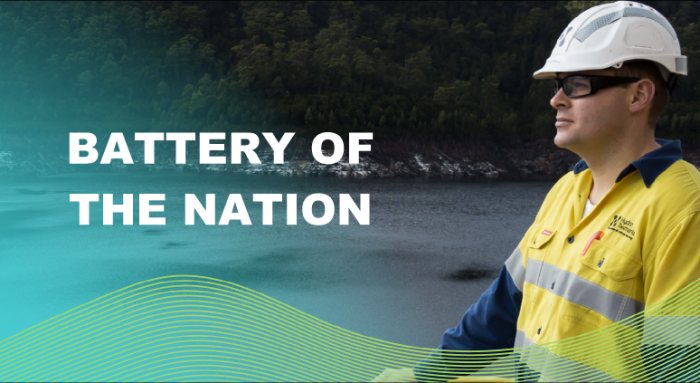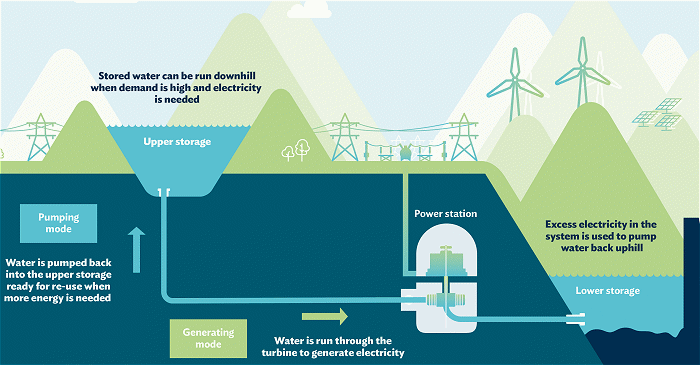
Image: Hydro Tasmania
Hydro Tasmania will be hosting community information sessions around the state regarding its pumped hydro storage plans over the coming weeks.
Pumped hydro energy storage systems consist of an upper and lower reservoir. Water is pumped into an upper reservoir when surplus electricity is available; usually from wind and solar farms. When electricity is needed, the upper reservoir water is run through a turbine, back into the lower reservoir.

Image: Hydro Tasmania
The Australian Renewable Energy Agency has previously identified 14 ‘high potential’ pumped hydro energy storage sites in Tasmania; being:
- Lake Cethana: 5 options from 32MW to 600MW
- Lake Parangana: 300MW potential
- Lake Rowallan: 600MW potential
- Great Lake: 600MW potential
- Lake Echo: 200MW potential
- Lake Margaret: 2 options, 300MW and 800MW
- Lake Murchison: 2 options, 84MW and 500MW
- Lake Rosebery: 400MW potential
Hydro Tasmania intends narrowing down the list to approximately 2,500 megawatts of potential and says the first project could start construction as early as 2020, with a 3-4 year construction phase.
The information sessions relating to the road ahead kick off in Cressy on July 25; then on to Bothwell (July 26), Rosebery (August 1), Queenstown (August 2), Sheffield (August 8) and Lorinna (August 30). Times and venues can be found here.
“Tasmania is well on the way to achieving 100 per cent self-sufficient renewable generation by 2022, with a number of wind projects currently underway,” said Guy Barnett, Tasmania’s Minister for Energy. “The Battery of the Nation has the potential to double our hydro energy capacity, create up to 3,000 jobs and generate up to $5 billion in investment, cementing Tasmania’s reputation as the renewable energy powerhouse of the nation.”
In other recent renewables news out of the Apple Isle, the Clean Energy Finance Corporation announced a $59 million commitment to the Granville Harbour Wind Farm last week, a project that will deliver a 33% increase in Tasmania’s wind power capacity. The CEFC says it’s the Corporation’s largest investment in Tasmania.
Also announced last week was the start of Tasmania’s solar feed in tariff review, which the Hodgman Government says aims to provide the right environment to encourage further uptake of solar panels by households, while also suitably rewarding those with systems already installed. Currently, Tasmania’s solar feed in tariff is 8.541 c/kWh for systems purchased after 30 August 2013. For systems bought prior to that date, a 1:1 FiT applies until the end of this year.

 RSS - Posts
RSS - Posts



Speak Your Mind